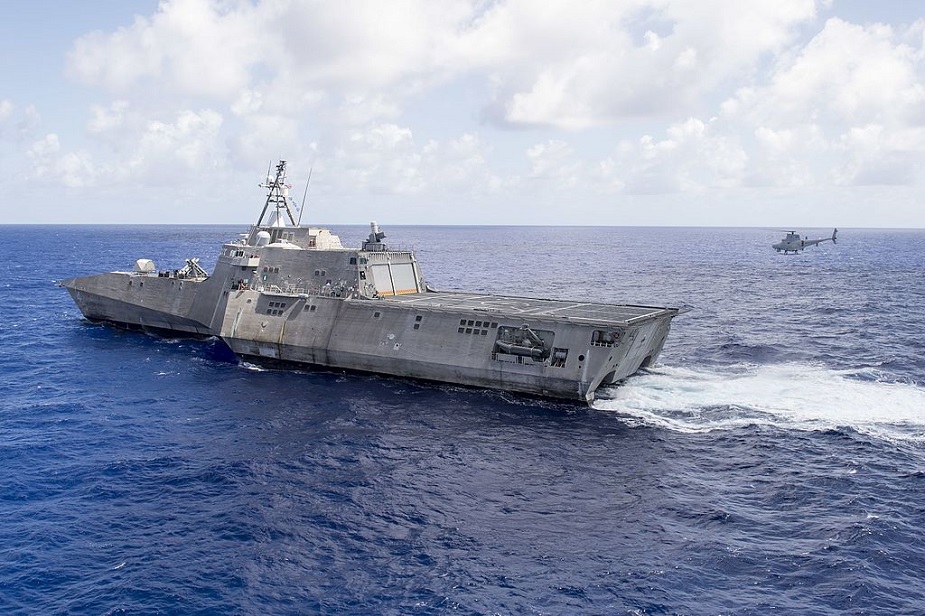By Lt. Joeriel Castillo, USS Coronado (LCS 4) Public Affairs
USS Coronado (LCS 4) successfully completed operational testing of the Coastal Battlefield Reconnaissance and Analysis (COBRA) System, Apr. 6. This second phase of testing for Coronado, which began shortly after completion of developmental testing, Feb. 22, involved in port and underway operations with support from Helicopter Sea Combat Squadron 21 and Mine Countermeasure Detachment 6.

"The crew onboard was the perfect fit to conduct this testing," said Danny Lunden, test director for Mine Countermeasure Mission Package, Naval Surface Warfare Center, Port Hueneme Division. "We all worked so well together and did so in such a short amount of time."
The operational testing included identifying possible landing zones for amphibious forces, detecting mines, and locating obstacles that would prevent forces from entering mission critical areas.
"It is incredible how all three different entities came together to accomplish this mission," said Cmdr. Karl McCarthy, Coronado's commanding officer. "It took an ample amount of time, dedication and teamwork from all parties to make this successful."
Personnel used both an MQ-8B Fire Scout and a MH-60 Sierra to process information and plan beach zone operations. As well, the testing required an upgrade to the Fire Scout and Mission Package Computing Environment to support the coastal mine reconnaissance missions.
"We worked diligently to prepare for COBRA operational testing," said Lt. Cmdr. James Gelsinon, aviation detachment officer in charge. "The lessons learned during developmental testing and the close relationship with the crew were key to our success."
Our video on USS Coronado LCS 4 recorded at IMDEX Asia 2017
Designated LCS testing ships, of which Coronado is one, are single-crewed and focus solely on testing hardware, software and concepts of operations for specific mission modules in order to develop the best tactics and doctrine within each ship's specified warfare area.
Sailors assigned to the test ships say they are excited to be part of shaping the future of LCS.
"This was an incredible and ground-breaking experience for myself and the mission package detachment," said Chief Mineman Lindsey Wolghemuth, mine detachment chief petty officer. "We get to see how LCS can not only rapidly respond, but how diverse each mission can be on each platform."
LCS is a high-speed, agile, shallow draft, focused-mission surface combatant designed for operations in the littoral environment, yet fully capable of open ocean operations. As part of the surface fleet, LCS has the ability to counter and outpace evolving threats independently or within a network of surface combatants. Paired with advanced sonar and mine hunting capabilities, LCS provides a major contribution, as well as a variety of options for fleet commanders, across the spectrum of operations.










